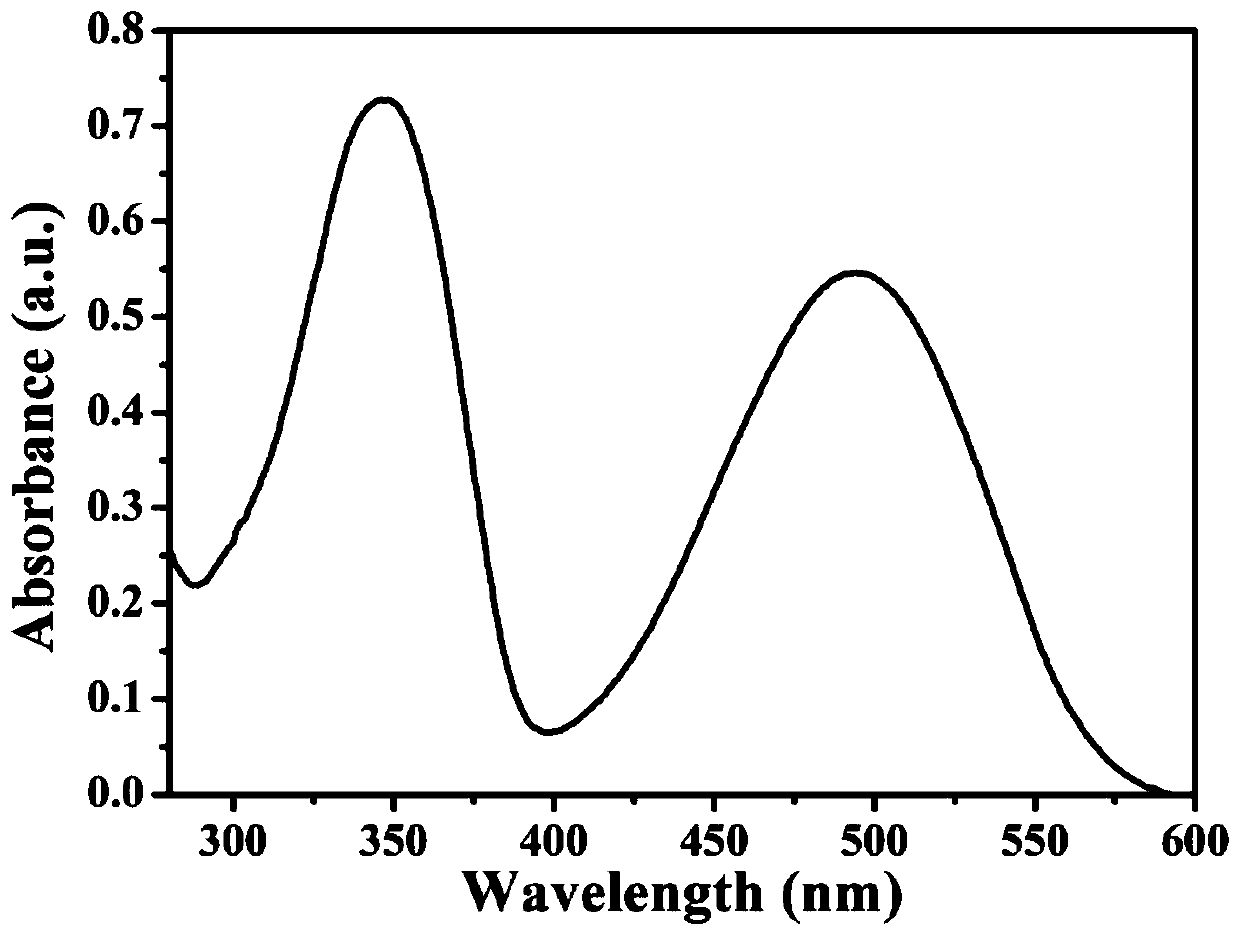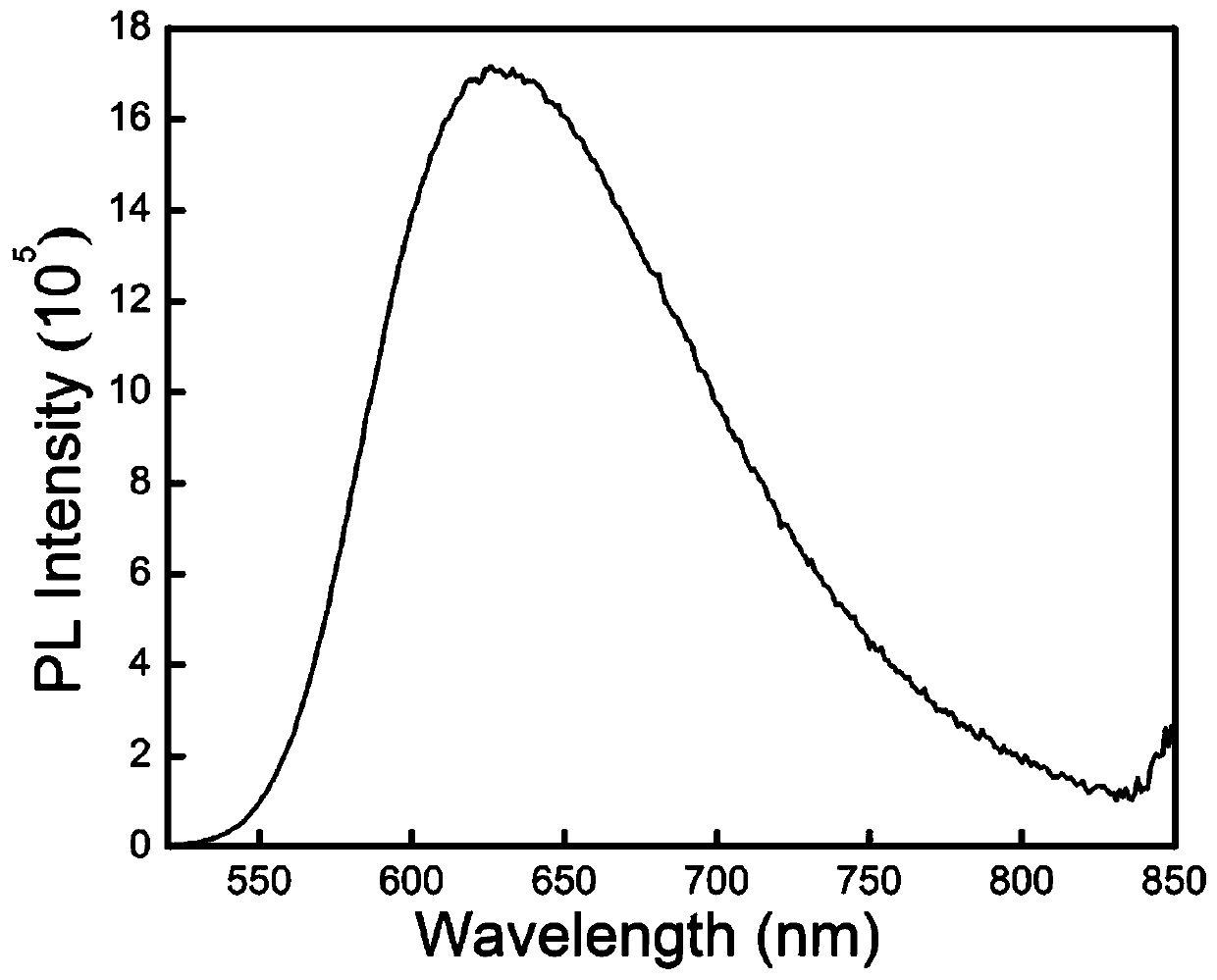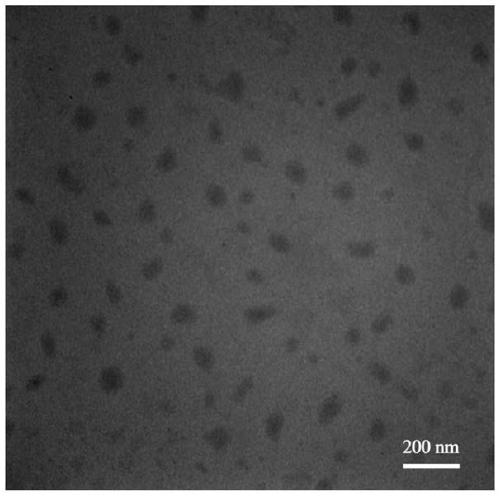Organic fluorescent material for ultrahigh resolution cell imaging as well as preparation and application of organic fluorescent material
A fluorescent material and cell imaging technology, which can be used in the analysis of materials, luminescent materials, and material analysis by optical means. Good, easy-to-build effect
- Summary
- Abstract
- Description
- Claims
- Application Information
AI Technical Summary
Problems solved by technology
Method used
Image
Examples
Embodiment 1
[0027] The organic fluorescent material used in this embodiment for ultra-high resolution cell imaging has the following structural formula (I):
[0028]
[0029] The preparation method of the organic fluorescent material of the present embodiment comprises the following steps:
[0030] Step 1: using 5-bromoresorcinol and 1-bromooctane as reaction raw materials, under the action of anhydrous potassium carbonate, acetone reflux reaction for 20 hours to generate terminal alkyl compounds;
[0031] The reaction formula is:
[0032]
[0033] The specific operation is: add 5-bromoresorcinol (5.0g, 26mmol) and 1-bromooctane (15.3g, 80mmol) in a 250ml single-mouth bottle, add anhydrous potassium carbonate (25g) under nitrogen protection, and add Acetone 150mL was dissolved and heated to reflux for 20 hours. Afterwards, the residue of potassium carbonate was removed after filtration, and the crude product was obtained after removing the solvent under reduced pressure. Petroleu...
Embodiment 2
[0043] The organic fluorescent material used for ultra-high resolution cell imaging has the following structural formula (I):
[0044]
[0045] The preparation method based on the above-mentioned organic fluorescent material for ultra-high resolution cell imaging includes the following steps:
[0046] Step 1: using 5-bromoresorcinol and 1-bromooctane as reaction raw materials, under the action of anhydrous potassium carbonate, acetone reflux reaction for 12 hours to generate terminal alkyl compounds;
[0047] The molar ratio of described 5-bromoresorcinol to bromooctane is 1:2, and the molar ratio of anhydrous potassium carbonate to 5-bromoresorcinol is 5:1;
[0048] Step 2: The product obtained in step 1 and 4,7-bis(5-trimethyltinthienyl-2-)-2,1,3-benzothiadiazole are fully dissolved in toluene solution, and tetratriphenyl Phosphine palladium is used as a reaction catalyst, and the target organic fluorescent material is obtained by reacting for 16 hours under the conditio...
Embodiment 3
[0054] The organic fluorescent material used for ultra-high resolution cell imaging has the following structural formula (I):
[0055]
[0056] The preparation method based on the above-mentioned organic fluorescent material for ultra-high resolution cell imaging includes the following steps:
[0057] Step 1: using 5-bromoresorcinol and 1-bromooctane as reaction raw materials, under the action of anhydrous potassium carbonate, acetone reflux reaction for 24 hours to generate terminal alkyl compounds;
[0058] The molar ratio of described 5-bromoresorcinol to bromooctane is 1:6, and the molar ratio of anhydrous potassium carbonate to 5-bromoresorcinol is 15:1;
[0059] Step 2: The product obtained in step 1 and 4,7-bis(5-trimethyltinthienyl-2-)-2,1,3-benzothiadiazole are fully dissolved in toluene solution, and tetratriphenyl Phosphine palladium is used as a reaction catalyst, and the target organic fluorescent material is obtained by reacting for 26 hours under the conditi...
PUM
| Property | Measurement | Unit |
|---|---|---|
| particle diameter | aaaaa | aaaaa |
| particle diameter | aaaaa | aaaaa |
Abstract
Description
Claims
Application Information
 Login to View More
Login to View More - R&D
- Intellectual Property
- Life Sciences
- Materials
- Tech Scout
- Unparalleled Data Quality
- Higher Quality Content
- 60% Fewer Hallucinations
Browse by: Latest US Patents, China's latest patents, Technical Efficacy Thesaurus, Application Domain, Technology Topic, Popular Technical Reports.
© 2025 PatSnap. All rights reserved.Legal|Privacy policy|Modern Slavery Act Transparency Statement|Sitemap|About US| Contact US: help@patsnap.com



